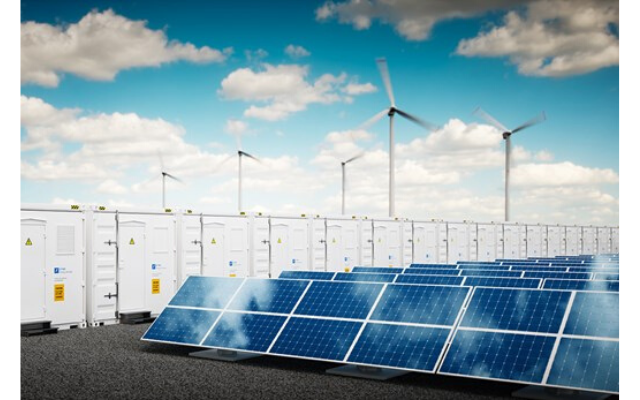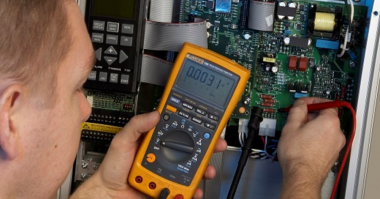For decades, the basic configuration of electrical power systems for commercial, industrial, and residential applications has only had little alteration. New technologies are now disrupting this system. Hybridization and power conversion are about to bring big changes. For those who adopt, there will be significant benefits.
Energy is expensive, and there’s every indication that energy costs will continue to rise for the foreseeable future. Small wonder then that businesses are devoting more and more effort to finding ways of controlling and ideally reducing their energy expenditure. The obvious approach is to improve the efficiency of their processes so that they consume less energy. This approach is logical and laudable, particularly as it helps to protect the environment, but it is also limited. Inevitably a point will be reached where no further increase in the energy efficiency of a process is realistically possible. What then?
Well, if it’s not possible to reduce the amount of energy used, the only option for driving down the energy bills is to find energy at a lower price. Let’s say straight away that the energy utilities are unlikely to oblige – at least not directly – so a more creative solution is needed. And that solution is hybridization.
But what is hybridization? In this context, its most general meaning is a power system that has access to two or more independent sources of energy. In this definition, the word independent is important – a power system that can be fed from either of two utility substations, for example, wouldn’t qualify as a hybrid system, because it simply has two connections to the same energy source – the national grid. However, a power system that can take power from the grid and also from, say, a solar panel installation is definitely a hybrid system.
That’s actually quite a good example. Adding a renewable energy source like solar power to an industrial or commercial power system can lead to useful cost savings but, if energy storage – most often in the form of batteries – is added as well, hybridization has the potential to save even more money, as well as making the power system much more versatile in operation.
Typically, hybrid power solutions are used in “behind the meter” applications, a good example of which is peak shaving. It’s axiomatic that the power system for a factory has to be designed so that it can safely supply the factory’s maximum load. However, it’s highly likely that this maximum power demand will be intermittent – just a few hours a week is typical. Which means that for most of the time, the power transformers feeding the plant are working well below their full capacity.
Now consider a factory with a hybrid power system incorporating energy storage. The very expensive power transformers can now be rated to cope with the average rather than the peak load, with the battery called on to make up the difference during periods of maximum load. This is peak shaving, and it has another big benefit.
Many industrial and commercial supplies are charged on the basis of a “maximum demand” tariff, which means that the utility charges the energy user not only for the amount of energy they consume, but also on the basis of the maximum load they put on the energy supply system. This extra charge is unwelcome but justifiable, as the utility’s plant has to be capable of dealing with the peak demand, however infrequently it occurs. Peak shaving enables energy users to limit their maximum power requirement from the grid by supplying some of their peak energy needs from their batteries. This results directly in a reduced maximum demand charge.
In reality, peak shaving as described above is only one of the many benefits offered by hybrid power systems with energy storage. Another attractive option is to use batteries to store energy from the supply system at times when the price is low and release it at those times – typically between 16:00 and 19:00 – when energy prices are highest. This can be considered as another form of peak shaving and is capable of reducing energy bills very significantly. Yet another capability offered by some hybrid power systems is the ability to generate reactive power on demand. This feature can be used to improve a site’s power factor and thereby save both energy and money.
For power systems that include non-dispatchable energy sources, such as solar and wind, hybrid power systems offer huge benefits such as reduced carbon footprint and sustainability. Hybridization allows for higher renewable penetration in the energy mix by compensating the power variations from the intermittent renewable sources – at the expense of carbon-emitting sources such as coal and gas power plants. Keeping energy supply and demand balanced avoids voltage and frequency fluctuations, providing excellent voltage quality for the consumers.
A hybrid power system with energy storage can reduce capital expenditure on equipment like transformers and save money on energy costs by cutting maximum demand, improving power factor and reducing peak-rate energy usage, but it can also do more. The batteries can continue to supply the plant in the event that the supply from the national grid fails. In such cases, the hybrid system effectively operates as an uninterruptible power supply (UPS) and can, in some cases, eliminate the need for a separate UPS installation to supply critical or sensitive loads.
One more invaluable option offered by hybrid power systems is the ability to feed energy from the batteries, from solar panels or from other local power sources, back into the grid. The payment the utility makes for this energy is a very effective way of further reducing energy bills! And a hybrid power system can generate even more revenue from the grid operator by providing services such as firm frequency response to help balance the grid’s supply and demand.
Hopefully by now hybrid energy systems will be starting to sound attractive, but what about the technology needed to implement them? The reality is that it’s all readily available.
There have been big developments in the batteries used for energy storage in recent years, with lithium-ion technology currently being the most popular choice, especially for fast-response short-period requirements. Elon Musk has constructed and put into operation a 100 MW battery of this type in Australia, but most users of hybrid power systems will have much more modest or longer time period requirements. These users may find their needs satisfied by batteries of a different type – for example, flow batteries that can operate for up to four hours.
However, batteries and some renewable energy sources such as solar panels, produce DC power, whereas the national grid and almost all industrial and commercial power systems need AC. Fortunately, once again, the solution is readily available, although it may at first sound surprising – it’s to use standard inverters, which are probably more familiar in the form of variable speed drives. In their variable speed drive guise, inverters take AC power at supply frequency, convert it to DC (the so-called DC-link) and then convert the DC back to AC at the frequency needed to control the motor.
But the DC-link doesn’t care where the power comes from, so it can equally be fed from a battery or a solar panel and it will convert the DC to AC at a frequency that can be accurately matched to and synchronized with the power grid. The inverters used in hybrid power system applications are fully bidirectional so can also take power from the grid and use it to top up the batteries.
While at first sight it may seem that the inverter hardware needed for hybrid applications would be somewhat different from that used in variable speed drives, it turns out that this need not be the case. Danfoss inverters for hybrid power systems use exactly the same hardware as variable speed drive applications, though the on-board software is, as would be expected, designed to offer different functionality. This hardware commonality is a big benefit as it means that hybrid applications benefit from products that have been rigorously tested and proven in literally thousands of variable speed drive applications around the world.
This should not be taken to mean, however, that designing and implementing a dependable and efficient hybrid power system is merely a matter of buying some standard components off the shelf and following the installation instructions! Expertise is needed to put together an optimized system and anyone thinking about investing in hybrid power is well advised to seek out suppliers with proven expertise in this relatively new area of technology. Danfoss is such a supplier and offers hybrid solutions that comply with international grid codes – an essential requirement for any hybrid solution being connected to the power grid. The company’s equipment is already proving its worth and delivering big savings in hundreds of hybrid power systems.
So-called disruptive technologies have received a lot of attention in recent times, but it’s fair to say that not all of the technologies to which this epithet has been applied are worthy of it. One that undoubtedly is, however, is hybridization. Hybrid power systems are radically different from those that have gone before and, as we have seen, they can provide huge benefits in terms of cost savings and reduced environmental impact.
In fact, so great are the benefits of hybridization that it would be no exaggeration to say that in the not-so-distant future, hybrid power systems will predominate. But there’s no need to wait! You can benefit from hybridization right now so why not get the ball rolling today by contacting a leading inverter technology expert with proven hybrid expertise?




